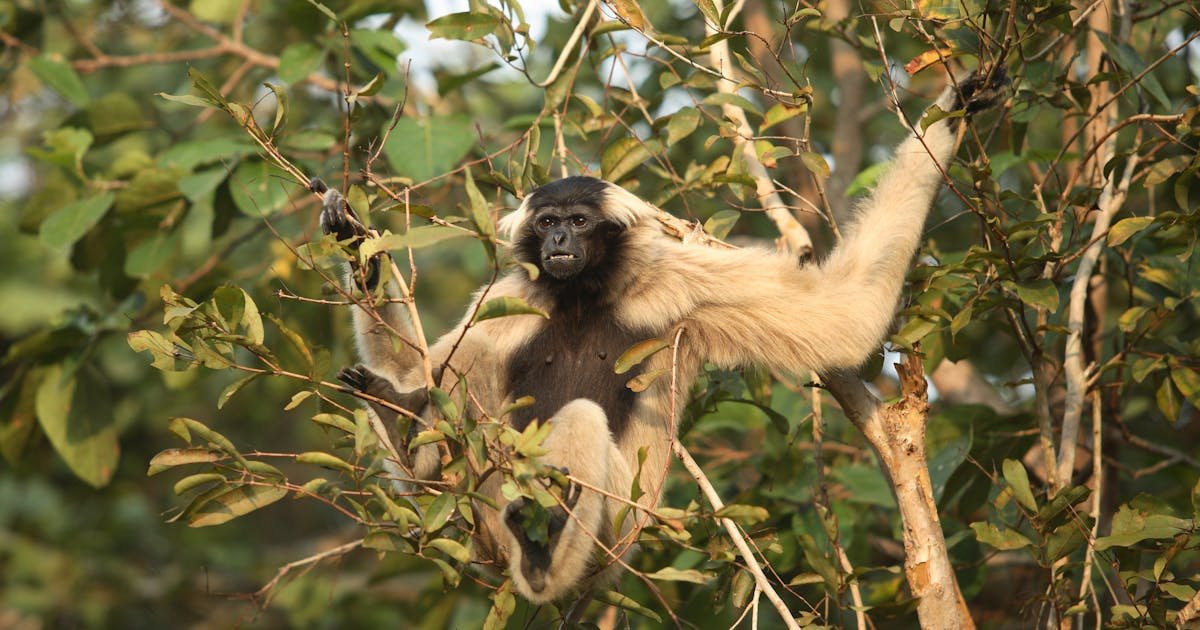One of the world’s most important places for nature is a small strip of mountainous forest no more than about 40 miles wide.
And for want of a relatively small amount of money, its long-term health is in doubt.
Not many people have heard of Cambodia’s Cardamom Mountains, home to one of the last large areas of intact tropical forest in Southeast Asia. This unheralded mountain range pales in size to the rainforests of the Amazon or Central Africa, yet acre for acre, its value rivals nearly any terrestrial ecosystem on Earth.
Most notably, the Cardamoms pulse with rare wildlife: A recent survey of the region uncovered elephants, clouded leopards, pileated gibbons and more — a testament to how healthy the ecosystem remains despite recent pressures.
Unfortunately, those pressures are building.
As Cambodia has developed, these forests — once so inaccessible that they remained basically untouched for centuries — are no longer safe from illegal logging and poaching, revenues from which are known to fund human trafficking and the drug trade across Southeast Asia. The 22 communities in and around the Cardamoms that depend on the forest, meanwhile, are increasingly caught in the currents of global markets pushing them to convert these forests to lucrative plantations and logging.
So critical is this region for nature and people that Conservation International has been working there for decades — and is this close to fulfilling a commitment to secure forests there for decades more.
But whether this new project takes off or fizzles out could come down to, improbably, a modest sum of money.
Most of the project’s funding — about $15 million — has already been secured for the next 15 years, the project’s leaders say. The shortfall? About US$ 1 million over the next year, originally earmarked by the United States government and intended for a critical purpose: to help sign agreements with the 22 communities, including Chong and Por Indigenous groups, in the region to secure both their consent to the project and to their share of the project’s benefits. This funding is considered a critical bridge until carbon revenues begin to roll in.
U.S. funding has already benefited this area immeasurably. Take the story of Mon Phos.
The only female ranger patrolling the Cardamom Mountains National Park — a 4,000-square-kilometer (1,500-square-mile) protected area within the mountain range — Mon Phos (pronounced mawn poh) was hired seven years ago by the Cambodian government to help combat poaching and illegal logging in the area.
Because of the work of these rangers, poaching has declined. Local communities now join patrols instead of resisting them. And the benefits extend beyond the health of the forest: Thanks to her earnings as a ranger, Mon’s children can now go to school.
The benefits of U.S.-funded projects like these, in other words, have a multiplier effect: protecting nature, combating illegal activities, benefiting communities and rural livelihoods, and creating goodwill in a geopolitically crucial region — while helping to counter the influence of actors working against U.S. interests there.
Similarly, U.S. funding earmarked for this corner of Cambodia also has a multiplier effect, unlocking tens of millions of dollars more to establish programs that would provide financial and other incentives for the protection of forests like these — essentially making them more valuable alive than cut down.
With U.S. funding not likely to be restored, Conservation International is exploring how it can continue the project any way it can. The future of this unparalleled landscape — and the people within it — hang in the balance.
Bruno Vander Velde is the managing director of storytelling at Conservation International. Want to read more stories like this? Sign up for email updates. Also, please consider supporting our critical work.




